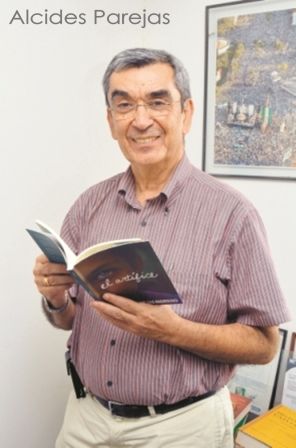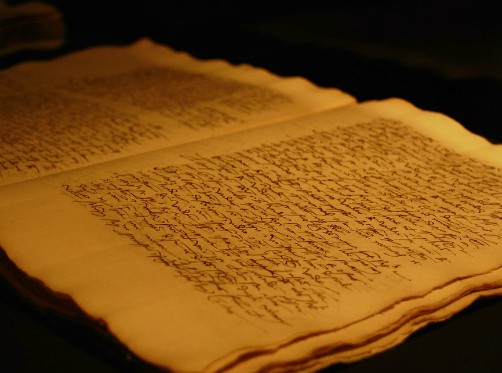A historian, novelist and essay writer, born in Santa Cruz de la Sierra in 1944. He specializes in Eastern Bolivian history about which he has written over twenty books. He is also an opinion columnist and political analyst and is a frequent guest in the national media. He has written a trio of historical novels as well.
José de Mesa is an architect born in La Paz in 1925. Teresa Gisbert, also an architect, was born in La Paz in 1926. Both have dedicated over 30 years to studying Bolivian history, and their interest in this began in the art and history of architecture. Between the two of the, and their son Carlos (who served as Bolivia’s vice president and president), they have published several Bolivian history books which are used in history reference. Teresa was also a History teacher in her city for over twenty years.
Hernando Sanabria
A historian, writer and educator born in Vallegrande (Santa Cruz) in 1912. He worked as a Geography and History teacher and wrote stories and essays on Eastern Bolivian history. As a historian he is known for his efforts to rescue local customs and for having written dictionaries of local slang and customs. He died in 1986.
Charles Wolfgang Arnade
A historian from Germany and naturalized U.S. citizen, he was born in 1927 and studied in universities from the United States, where he also worked and still works as professor and historical-anthropological researcher for entities like the St. Augustine Historical Restoration and Preservation Commission, the Southern Historical Society and the Anthropological Society of Florida, plus several colleges. He came to Bolivia in 1952 with a scholarship from his university to study the country, and it was here that he did the research for his doctoral thesis about the founding of Bolivia. As he researched to complete that work, he also published on the side some of his findings in local newspapers, which would make him known to the public and native academics. He stayed in the country for five years, and returned to the United States, but his ties with Bolivia haven’t been severed, for he returns periodically. He is one of the few foreign historians that have made the history of Bolivia known internationally, with books such as “The emergence of the Republic of Bolivia,” “The history of Bolivia and the United States of America,” “A discussion of the Bolivian Indian,” “Scenes and episodes from History: Bolivian Studies,” and his autobiographical “My life in Bolivia,” his most recent work on the country.
Gunnar Mendoza
Born in the mining town of Uncia (Potosi) in 1914, son of also famous physician and historian Jaime Mendoza, whom he’d collaborate with in his historiographical research at a young age. He studied Law at the Saint Francis Xavier University in Sucre, and went on to work as director of the National Archives of Bolivia, the institution that preserves the country’s valuable historical records. He also specialized in Archivology at the American University and the US National Archives in Washington. His work at the National Archives started with the collection and classification of colonial and early republican documents related to southern Bolivia, and for the next fifty years he worked as director, he’d develop an efficient method for guides, catalogues and classification listings of all documents that are still in use, and he also participated in the creation of law codes concerning all archives and public libraries. Due to his administration, the Archives were also able to publish unknown and very valuable writings from the Colonial period that were formerly not accessible. Though he himself defined his work as that of an archivist, he was also a historian and a bibliographer that wrote countless books, magazines, newspaper columns, essays, bulletins and leaflets that were collected and published in a Complete Works series after his death in 1994.
Bartolomé Arzáns de Orsúa y Vela
A self-taught historian born in Potosi in 1676 of Spanish origins, he is known for writing the extensive “Historia de la Villa Imperial de Potosi,” a very long chronicle of the Spaniard viceroyalty and its outstanding successes that he kept writing until his death, and was completed by his son with just eight more chapters added. This is considered the first truly Bolivian literary work, written by a Bolivian-born chronicler and on his own initiative, unlike the commonplace practice of chroniclers to be Spaniards employed in the service of crown officials and commissioned by the crown or the Church to write histories; and what’s more: his work is critical of the authorities. Arzáns de Orsúa never published his work, and neither did his son, so it stayed in the archives of a Church in Potosí for centuries until the 19th century, and it was published in three volumes in the 1960s due to the donation of a benefactor to the Brown University. However, his other work “Annals of the Villa Imperial” was published and read in his lifetime.
Gabriel René Moreno
A native of the city of Santa Cruz de la Sierra, and born in 1836, he was a lawyer by formal education but never worked as such, instead dedicating his life to history and literature, in which he made a name for himself with his research and writings. He spent most of his life in Chile, where he met other remarkable thinkers and writers that influenced him, and despite his absence, his writings would focus on Bolivian history and literature, such as his first book on national poets. He collected, bought and classified over three thousand documents to create his Bolivian Library catalogue, and wrote essays and commentaries for many of the documents therein, that would be important as bases for creating the National Archives, as well as books on history and literary critique. Nowadays, the Santa Cruz state university bears his name in his honor.
Antonio Paredes Candia
He was born in La Paz in 1924, and as a youth travelled to remote towns and villages in the Andes area with his own puppet company and books, working as a rural teacher in inaccessible places. From this experience, he accumulated a large compendium of popular myths, legends, tales and music that he would later publish in over a hundred books, thus becoming the most prolific of Bolivian folklore historians. He was very popular and loved by the people, earning the nickname of “Uncle Antonio.” He also was an folkloric art collector, and this collection together with his books and historical documents were donated to the state when he died, and are now in the Antonio Paredes Candia Museum in El Alto.






